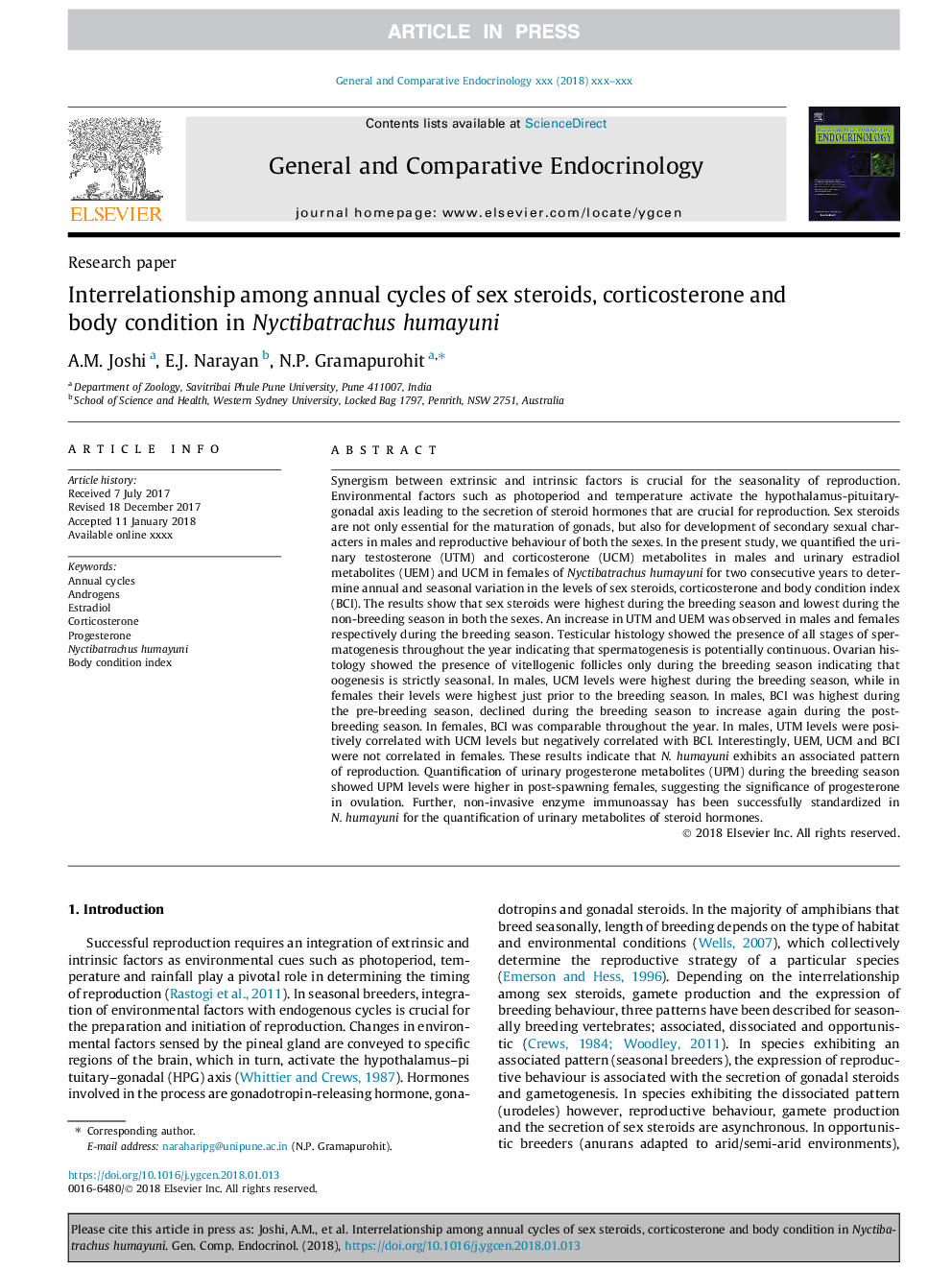| Article ID | Journal | Published Year | Pages | File Type |
|---|---|---|---|---|
| 8631089 | General and Comparative Endocrinology | 2018 | 10 Pages |
Abstract
Synergism between extrinsic and intrinsic factors is crucial for the seasonality of reproduction. Environmental factors such as photoperiod and temperature activate the hypothalamus-pituitary-gonadal axis leading to the secretion of steroid hormones that are crucial for reproduction. Sex steroids are not only essential for the maturation of gonads, but also for development of secondary sexual characters in males and reproductive behaviour of both the sexes. In the present study, we quantified the urinary testosterone (UTM) and corticosterone (UCM) metabolites in males and urinary estradiol metabolites (UEM) and UCM in females of Nyctibatrachus humayuni for two consecutive years to determine annual and seasonal variation in the levels of sex steroids, corticosterone and body condition index (BCI). The results show that sex steroids were highest during the breeding season and lowest during the non-breeding season in both the sexes. An increase in UTM and UEM was observed in males and females respectively during the breeding season. Testicular histology showed the presence of all stages of spermatogenesis throughout the year indicating that spermatogenesis is potentially continuous. Ovarian histology showed the presence of vitellogenic follicles only during the breeding season indicating that oogenesis is strictly seasonal. In males, UCM levels were highest during the breeding season, while in females their levels were highest just prior to the breeding season. In males, BCI was highest during the pre-breeding season, declined during the breeding season to increase again during the post-breeding season. In females, BCI was comparable throughout the year. In males, UTM levels were positively correlated with UCM levels but negatively correlated with BCI. Interestingly, UEM, UCM and BCI were not correlated in females. These results indicate that N. humayuni exhibits an associated pattern of reproduction. Quantification of urinary progesterone metabolites (UPM) during the breeding season showed UPM levels were higher in post-spawning females, suggesting the significance of progesterone in ovulation. Further, non-invasive enzyme immunoassay has been successfully standardized in N. humayuni for the quantification of urinary metabolites of steroid hormones.
Related Topics
Life Sciences
Biochemistry, Genetics and Molecular Biology
Endocrinology
Authors
A.M. Joshi, E.J. Narayan, N.P. Gramapurohit,
